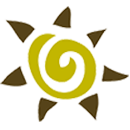
GOT QUESTIONS? WE HAVE ANSWERS!
Your Solar Panel Experts!
What solar PV system should I install?
The size of your solar PV system will depend on, the physical unshaded area available for the installation of your panels, how much you are prepared to spend and what portion of your electrical consumption you wish to generate.
To work out what size solar PV system you require, you need to analyse your household’s daily electricity consumption. Your monthly or quarterly electricity bill measures your household’s electricity consumption in kilowatt hours. From this figure, you can calculate your average daily electricity consumption, and the average amount of electricity your solar PV system needs to produce to cover your electricity needs.
This process will be completed by your accredited designer during the design and specification stage, as part of their load analysis.
What angle should the solar panels be on?
Solar PV panels produce most power when they are pointed directly at the sun. In Australia, solar modules should face north for optimum electricity production. The orientation of the panels will often have a greater effect on annual energy production than the angle they are tilted at. A minimum tilt of 10° is recommended to ensure self cleaning by rainfall.
If your roof’s slope is not ideal, your accredited designer can create an appropriate mounting frame to correct the orientation and elevation of your panel. Failing this, the designer can advise you on the difference in energy output for different tilt and orientation.
How much sunlight should the panels receive?
The amount of energy in sunlight that a solar PV panel receives over a day is expressed in peak sun hours. As the amount of energy generated by a panel is directly proportional to the amount of energy it receives from sunlight, it is important to install panels so they receive maximum sunlight.
Your accredited designer will calculate the amount of energy generated by the solar PV panel from the peak sun hours available. Peak sun hours vary throughout the year.
What about shading and dirt?
Solar PV panels should ideally be in full sun from at least 9am to 3pm. They should not be placed in shaded areas and be kept free from dust and dirt.
Even a small amount of shade – from things like trees, roof ventilators or antennas – will have a large impact on the output of a panel, as it changes the flow of electricity through the panel.
Shading or dirt on just one of the cells in a solar panel results in a loss of power from many cells, not just the one that is shaded.
What about temperature?
The amount of electricity a solar PV panel can generate is reduced as temperatures increase. Solar panels operate best at ambient temperatures up to 25°C. However, if the ambient temperature is higher, the panel’s output declines.
What will happen to my meter at home?
When your solar PV system is installed you may need to have a new meter installed.
If you have a traditional accumulation meter (with a spinning disk) this will need to be replaced with an interval meter or smart meter. This is because an accumulation meter does not record the energy you export to the grid or the electricity you import from the grid. An interval meter or a smart meter provide half hourly readings of the electricity you consume and the surplus electricity you generate.
What other information do I need to know?
When signing a contract with your designer/installer, you need to be informed. Important questions to ask include:
-Is the designer accredited?
-Is the installer accredited?
-What are their accreditation numbers?
-Ask to see their accreditation photo ID card
-Will your system be designed and installed by an accredited individual?Check the list of accredited installers on the Clean Energy Council website to confirm (www.solaraccreditation.com.au)
Contact the designer/installer’s former customers to find out if they were knowledgeable, easy to work with, and took the time to explain the systems operation. Also find out if their systems are working well, if there have been any problems, and, if so, if they returned to fix them.
Ask for the designer/installer business references, and check them, especially if the company’s reputation is unknown.

